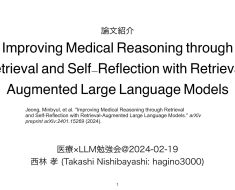Will Generative AI Assist You or Put You Out of Work?
While the question has been raised countless times, let’s take a current look at what gen AI means for the workforce.
Over the last six months, there is one question that I have been asked far more often than any other. That question is whether we are all about to lose our jobs to AI. And it isn’t just my readers who are concerned about what the future may hold. Friends and family also frequently ask me variations of this question.
Unfortunately, history contains countless examples of employees being displaced by technology. Sometimes technological changes even disrupt entire industries. Consider, for example, how online streaming services did away with video rental stores.
To be perfectly frank, there are very few job roles that AI would not be able to eventually replace. Even so, the situation might not be as dire as I had initially thought. Let me explain.
I have long assumed that office workers would be among the first to be replaced by AI. As time goes on, I am beginning to wonder if AI might assist office workers rather than completely replacing them. Sure, there might be fewer office workers in the future, but I don’t think they are going to completely go away.
AI assistants are quickly becoming an absolute necessity for anyone who works in an office environment. Admittedly, I haven’t worked in the corporate world in a long, long time. Even so, I have plenty of friends who work in offices and talk about how overwhelming it is. Their day is filled with so many calls and meetings, that there is barely any time left to get their actual work done.
This sentiment seems to be echoed by Microsoft Viva Insights. If you aren’t familiar with Viva Insights, it is a Microsoft 365 tool that helps users to track the degree to which they are collaborating with others. At the same time, Viva Insights also focuses on user’s wellbeing by showing them how often they are answering emails or attending meetings outside of normal working hours. Viva Insights can also help users to block off a period of focus time, during which users will not be disturbed by notifications and reminders, thereby giving the user a chance to get some work done.
By creating Viva Insights, Microsoft is essentially acknowledging that users stay so busy with calls, meetings, emails, and other distractions that there is barely time to do anything else. The day to day schedule is so chaotic and jam packed that users are forced to multitask if they hope to get anything done at all.
Add to this the fact that every time there is an economic downturn, users are asked to do more with less. The problem is that things never seem to go back to the way that they were before. Doing more with less simply becomes the permanent new way of doing things until the next time, when users are once again asked to do more with less. Over time this means that users are progressively being asked to do more and more with less and less.
All of this is to say, that the way that users in corporate environments currently work is completely unsustainable. There are simply too many demands being made of the user’s time and eventually something has to give.
An AI assistant such as Microsoft Copilot may end up being the one tool that makes all of this chaos manageable. Such a tool could theoretically help users to focus on what is important, while taking care of some of the time consuming background tasks on the user’s behalf. In other words, Copilot can also potentially help users to work far more efficiently.
One more reason why Copilot and other AI tools might not end up replacing users after all is because there is a limit to what AI is capable of. There is also a limit to the ways that AI could realistically be used without it becoming ridiculous.
Let me give you an example. Suppose for a moment that you had a Teams meeting scheduled for tomorrow morning, and that it was one of those meetings that doesn’t really have anything to do with you, and yet for some reason you are expected to attend. I think it’s safe to say that we have all been to meetings like that.
But what if it were possible to have Copilot attend the meeting on your behalf, and write up a one paragraph summary of anything that comes out of the meeting? If that were possible (which it probably will be), Copilot would save you a lot of time, while also freeing you from sitting through a boring meeting.
Now, imagine the same situation, only this time, imagine that this was an important meeting in which you are heavily involved. Would you feel comfortable sending Copilot in your place and telling it to answer people’s questions the way that you would answer them (assuming that such a thing were even possible)? I’m guessing, probably not. At best, sending an AI assistant in your place would show apathy toward the meeting. At worst, the AI would be unable to do everything that it was called upon to do, thereby preventing the goals of the meeting from being met. In other words, there will always be some situations that call for a human in the loop, and for which AI would be a poor substitute.
I also mentioned that there comes a point at which replacing users with AI becomes absurd. So with that in mind, imagine once again that you are asked to attend an important meeting. This time however, it is not just you who sends an AI assistant in your place. Everyone involved in the meeting sends their AI assistant. While I have seen some pretty interesting “AI to AI” conversation demos, I am guessing that if everyone abdicated their responsibilities and sent an AI assistant to a meeting in their place, then the meeting would be a complete waste of time.
About the Author
Brien Posey is a 22-time Microsoft MVP with decades of IT experience. As a freelance writer, Posey has written thousands of articles and contributed to several dozen books on a wide variety of IT topics. Prior to going freelance, Posey was a CIO for a national chain of hospitals and health care facilities. He has also served as a network administrator for some of the country’s largest insurance companies and for the Department of Defense at Fort Knox. In addition to his continued work in IT, Posey has spent the last several years actively training as a commercial scientist-astronaut candidate in preparation to fly on a mission to study polar mesospheric clouds from space. You can follow his spaceflight training on his Web site.





